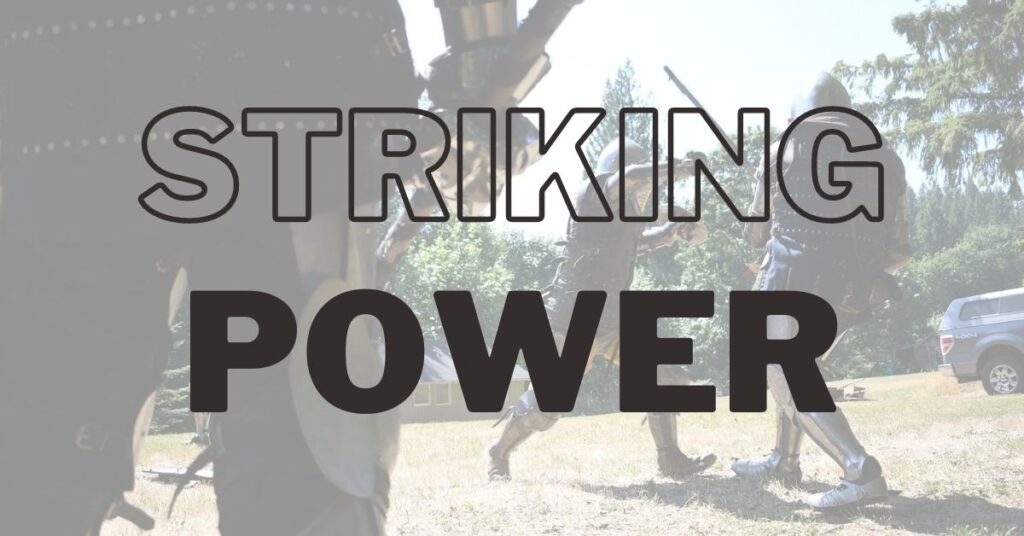Being able to have a lot of striking power in armored combat is a necessary and vital skill to any participant in the sport. Punching power can offer a distinct advantage when most inside the ‘list’ expect those punches not to hurt.
How do I throw a punch?
First, have a proper stance. Second, Throw the punch from your feet and hips and let your whole body do the work. Third, maintain proper form and skeletal alignment. Fourth, punch through your target not just at it. Simple right? Let’s break all of that down.
-
 Certified Awesome Buhurt Shirt.$15.00 – $19.00
Certified Awesome Buhurt Shirt.$15.00 – $19.00
What is the proper stance for punching?
Depends on the punch. A standard ‘cross’ or ‘straight punch’ is generally thrown best in a 3/4 athletic stance. Be sure to have your primary (dominant) foot to the back. Keep your feet shoulder width apart. The toe of your dominant foot should be roughly in line with the heel of your non dominant foot. Keep your weight equal on both feet and your hips square to your target.
Where are my hands when I start throwing the punch?
I’ll tell you they aren’t at your hips. You’ll see a lot of (untrained) fighters dropping their hands (both of them) to throw a punch. Keep your hands up by your face. Deliver your punches from there and you’ll experience the ability to hit harder and maintain a strong defense.
Okay, so when I throw the punch, what should I be thinking about?
Concentrate on throwing from your feet and hips. Rotate into your punch with your hips and push of with your back leg. With your dominant foot, push off the ball and think about “squashing a bug”. This will help you rotate your leg properly and generate more power. Keep your knees bent and turn your hips past the target. Then, extend your arm and rotate your fist past horizontal to lock out your arm and shoulder to create a strong structure.
So… There you have it. If that doesn’t help, then watch this video. Also, check out Armored Combat Northwest for training opportunities. And for additional training techniques, check out arm bars, head control and the underhook.
